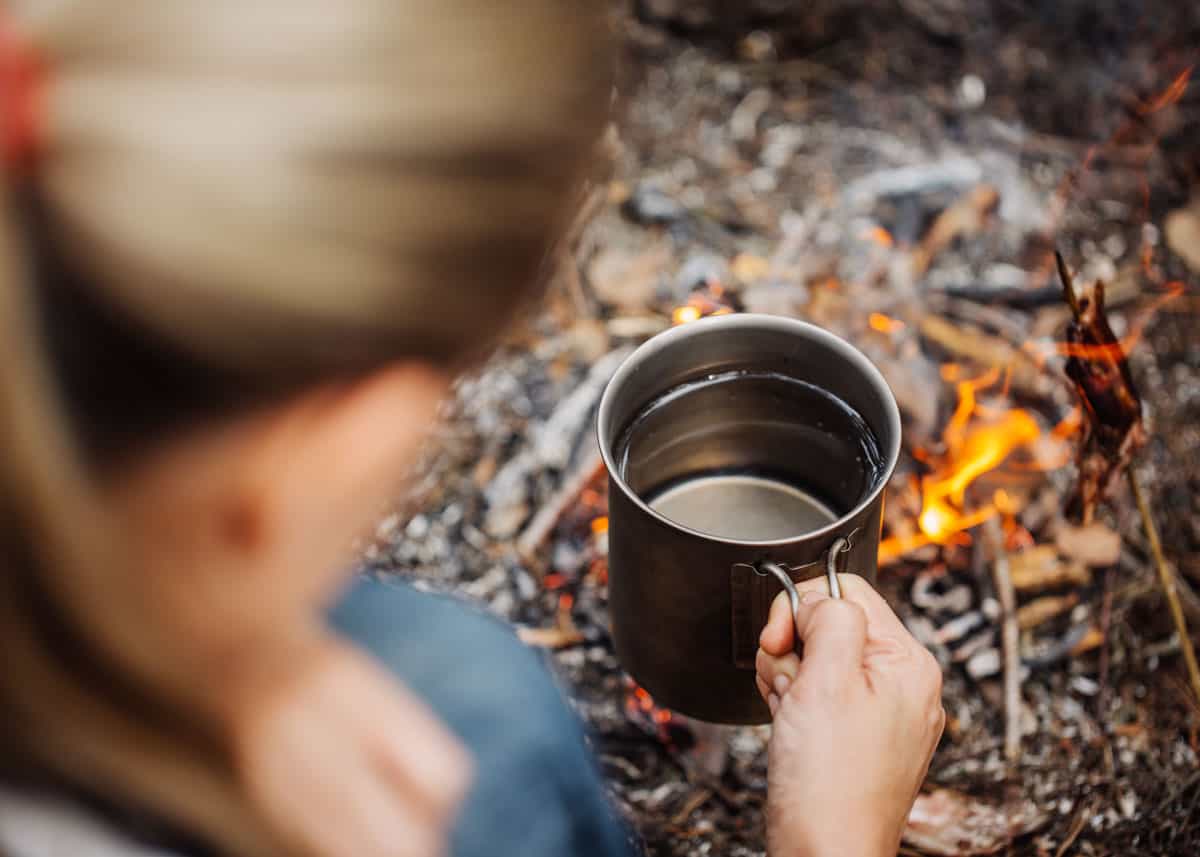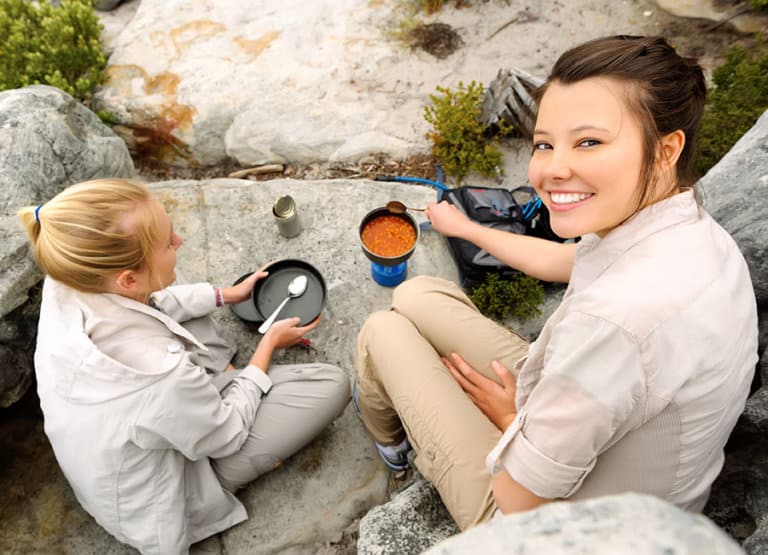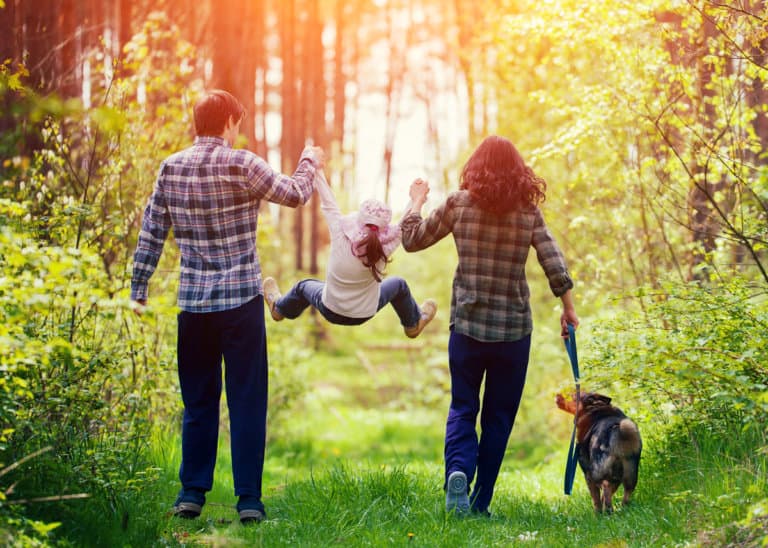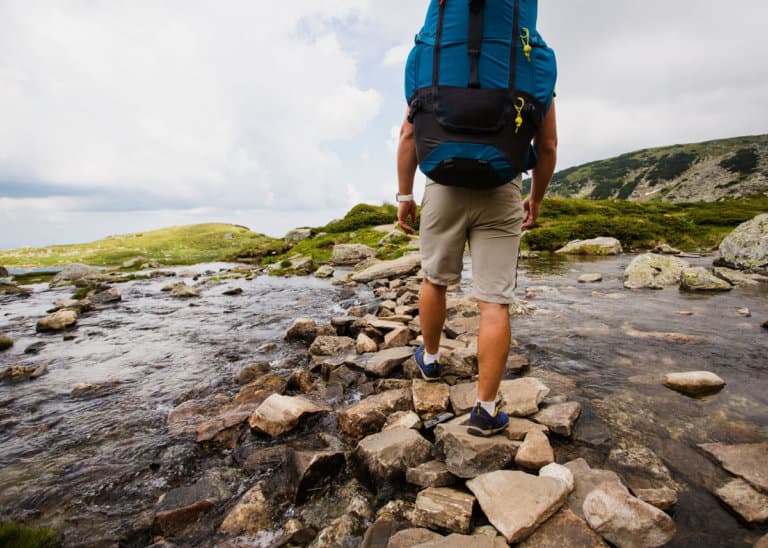How Long to Boil Drinking Water: Safe Water Guide for Campers
Concerned about having enough safe water on your trip? When you’re hiking and camping, you likely have an endless source of good water – if boil it first. In this post, you’ll learn how long to boil water to purify it for drinking.

This guide is going to be complete for campers and hikers.
But before we get to all the details, here’s the quick answer:
How Long to Boil Drinking Water
How long to boil water? 1 minute of a rolling boil will kill all pathogens, according to The Center for Disease Control and Prevention (CDC).*
*A few notes: The water should be clear (filtered if cloudy). Also, if you’re at elevations above 6500 feet, you should boil for 3 minutes.
Boiling water is probably the oldest sterilization method in human history and one of the most effective. If you want specifics about water purification, this is your all-purpose guide.
Before we get to the specifics, I want to clarify one detail.
Boiling water before drinking will only kill organisms – like viruses, bacteria, and parasites. Boiling water won’t make chemically contaminated water safe. It’s important to know about unsafe water sources, like rivers contaminated by farming chemical runoff.
Okay, now on with the guide!

Here are the best travel water filters – they are portable, effective, and great for travel and outdoor adventures.
Boiling Water: A Scientific Breakdown
Let’s start with a fact-based look at boiling water for drinking.
Boiling vs Other Water Treatment Methods
The first thing to know is that boiling is the single most effective way to kill pathogens in drinking water. It will eliminate a whopping 99.999% of all microorganisms.
There are other water treatment methods out there, including filters, purification tablets, and ultraviolet lights. None of them are as effective as boiling.
For example, here’s a list of things that can impact the quality of a chemical disinfectant:
- Contact time
- Water temperature
- Water turbidity/cloudiness
- The pH of the water
- The concentration of the disinfectant
It’s a hefty list, isn’t it? A lot of things can go wrong.
Other treatment methods aren’t any better. A water filter might not work for viruses the way that it works for bacteria; different microbes will have different reactions to tablets made of iodine, chlorine, or chlorine dioxide.
Here are your options for purifying river water.
This isn’t to say that boiling is completely foolproof when it comes to purifying water.
There are non-organic pollutants that boiling can’t cure, so it might be worth your while to carry a filtration or distillation system with you during your trip.
To kill off living organisms, however, boiling is the way to go. If you’re serious about safe water, boiling is the most important and most effective step in getting it.
Boiling Temperatures at Different Elevations
How can you tell when a pot of water is boiling? Despite what you might think, it isn’t related to bubbles or steam. The boiling point of water is based purely on temperature.
Water boils when it reaches 212°F (100°C) at sea level. This is the temperature that you’ll need to remember while camping, hiking, hunting or just traveling to countries where clean water is a luxury.
If you’re climbing a mountain, on the other hand, you’ll need to remember a different number: 200.1 °F (93.4 °C). This is when water reaches its boiling point at elevations of 6,250 feet or more.
Why does elevation matter? It has to do with atmospheric pressure. To put it simply, you lose atmospheric pressure as you get higher and higher off the ground, and this impacts the boiling point of water.
You’ll need to boil for a longer period when you ascend to higher elevations.
How Long Does it Take Water to Boil?
Realistically speaking, you’re going to need anywhere from 5 to 20 minutes to purify your water.
It may take longer or shorter depending on things like your pot, your fire, your water volume, and the weather conditions outside.
Let’s assume that you don’t have a thermometer when you get thirsty in the woods. Without being able to tell its temperate, how long do you need to boil water before it’s safe to drink?
The short answer is that you only need to boil it for one minute at sea level or three minutes at high altitudes. This comes straight from the CDC.
However, these numbers refer to water that has already reached its boiling point of 212°F (100°C). It doesn’t account for the time that you have to sit around and wait for the water to heat up.
Boiling enough water for a family barbecue is going to require more time and effort than boiling a single canteen for individual use.
2 Types of Water Contamination
We’ve talked a lot about the nasty stuff in contaminated water, but there are two categories to beware:
- Organic contaminants are things like bacteria, protozoa, and viruses. They’re alive in the water, and boiling kills them.
- Toxic contaminants are things like pesticides, pollutants, and non-natural chemicals. Boiling will not do anything about these toxins. They aren’t alive, so they can’t be killed, and it isn’t possible to sterilize something like mercury or fluoride with water alone.
Toxic contaminants are the reason why you might carry a filter with you even if you plan on boiling your water as well. While boiling is the most effective solution for living pathogens, it won’t do anything about non-living ones.
3 Types of Pathogens
Boiling is the best way to get rid of pathogens in contaminated water. But what are they, and why are they bad?
Here are the three types of pathogens to know:
- Protozoa. These are tiny, single-cell parasites like Cryptosporidium and Giardia lamblia. They can cause intestinal issues such as diarrhea, nausea, and abdominal cramps.
- Bacteria. These are the microorganisms that lead to things like salmonella poisoning and E. coli infections. Not all bacteria are bad, but the stuff found in dirty water should be killed before you take a drink.
- Viruses. Viruses can cause everything from hepatitis to meningitis. You might think of them as something that’s spread by coughs and handshakes, but there are also water-transmitted viral pathogens that can be spread through contaminated H2O. You’ll want to watch out for them.
Heating Water Without Boiling It
Did you know that you don’t actually need to boil water to kill pathogens? It’s the heat that destroys them, not the bubbles.
If you have time, you can just warm a pan of water and let it sit for a while, and it will sterilize with the same efficacy as boiling.
Here are the times and temperatures to know:
- 30 minutes to kill pathogens at a temperature of 160°F (70°C).
- 3 to 5 minutes to kill pathogens at a temperature of 185°F (85°C).
- By the time that water reaches its boiling point of 212°F (100°C), all of the pathogens are either dead or dying. You’ll only need to boil for 1 to 3 minutes depending on your altitude.
Additionally, if you’re worried about specific strains of germs, you can look up their thermal death points. For example, Giardia is killed with a 98% success rate when water is heated at 140°F for 10 minutes.

FAQ About Boiling Drinking Water
Now that you have a general understanding of the boiling process and how it can purify your drinking water, let’s have a little FAQ for some of the most common questions related to it.
1. Does boiling water kill bacteria?
Yes. Boiling water kills all of the living pathogens within it, including bacteria – as long as it boils long enough.
2. Does boiling water affect its taste?
Some people don’t notice any taste differences with boiled water. Other people claim that it has a “flat” feeling since its oxygen gets dissolved during the boiling process.
If you don’t like the taste of boiled water, you might try adding a salt tablet (or a pinch of salt) to it.
3. Is boiling water enough to make it drinkable?
No. There are two kinds of contaminants in dirty water, the organic and the non-organic kind, and boiling water only takes care of the first.
It’s great for killing live pathogens like bacteria and protozoa, but it can’t do anything for fertilizers, insecticides, oil spills, or other chemical pollutants.
4. Can you boil water for too long?
Not really.
There’s been some concern in recent years over the possibility of “overboiling” water. The argument is that boiling water for too long will concentrate the minerals and particles within it, and this super-strengthened mixture can cause health problems.
For example, a small amount of arsenic might turn into a lethal amount, or a healthy dose of calcium salt might become an excessive one.
While it’s true that boiling water can concentrate certain compounds, you’d have to ingest a staggering amount to cause any real health problems.
With arsenic, for example, you’d have to boil down 80% of a tea kettle’s water to reach an unhealthy concentration of it, and you’d have to consume the mixture every day for years to cause actual toxicity in your body.
Long story short, while the concept of overboiling water is based in fact, it’s nothing that you need to worry about. Don’t concern yourself with it when considering how long to boil water.
5. Is it safe to reboil water?
Yes. It’s safe to reboil water.
Some people say that re-boiling water will increase its concentration just like overboiling. However, it’s another thing that’s more “scare tactic” than “genuine science.”
As we’ve already covered, you’re in no danger from boiling your water too much with average, everyday use.
6. How effective is boiling water for purification?
According to the World Health Organization, boiling water will kill 99.999& of its pathogens in less than a minute.
However, this is when its boiling point has already been reached, so your real-time estimate for a 99.999% purification rate can be anywhere from 5 to 20 minutes of boiling.
7. How long is cooled boiled water sterile for?
The general consensus is that boiled water will remain sterile for 24 hours.
The dead germs won’t come back to life, but new germs might start growing. This is especially true if you’re opening and closing something like a water bottle and repeatedly exposing it to the elements.
If it’s been longer than a day, you should consider re-sterilizing your water just to be safe.
8. Does boiling water kill germs?
Yes. Boiling water will kill any living microorganisms within it, as long as it boils long enough.
9. Does boiling water kill fungus?
Yes. There’s still a lot that we don’t understand about fungi in drinking water, but we know that it exists, so it’s something to consider if you’re concerned about water quality.
The good news is that hot water can kill fungi. This isn’t even limited to drinking water. A common step in treating athlete’s foot is to wash the contaminated socks in ultra-hot water, so it’s an effective measure all around.
10. How long does it take for boiling water to kill germs?
This is a surprisingly complex question, and its answer depends on several different factors:
- What’s the temperature of your water? It officially boils at 212°F (100°C), but it might simmer or bubble at temperatures below that.
- Are you in a high altitude? At sea level, water only needs to boil for one minute to kill all of the pathogens. At an altitude of 6,250 feet or more, the atmospheric pressure is much lower, so it’ll take closer to three minutes.
- Were you heating your water before you boiled it? You don’t actually have to boil water to kill microbes. Heating water to 160°F (70°C) degrees for 30 minutes will sterilize it just as effectively as boiling it for one minute at 212°F (100°C).
11. Does boiling water sterilize?
Let’s say that you need to stitch a wound in the middle of nowhere. Can you sterilize your needle by boiling it in hot water?
The answer is yes. Boiling water kills all living microorganisms, so if you submerge something in a bubbling pot, you can kill all of the microorganisms on the object as well as in the water itself.
However, you can’t sterilize things just by pouring boiled water on them. For example, you can’t sterilize a toothbrush by rinsing it with boiled water. The object needs prolonged contact with heated water to become sterile.
12. Is boiled tap water safe to drink?
Yes. If you want to fill some canteens with tap water and boil it later during a camping trip, that’s perfectly safe.
If you’re concerned about the quality of your everyday drinking water, however, there are easier ways to purify it than by boiling everything that comes out of your faucet.
You should also know that boiling your water isn’t enough to get rid of non-organic pollutants, including ones that are commonly found in tap water, so you might want to look into alternative purification methods for household use.
13. What is the disadvantage of boiling water?
There are no health risks to drinking boiled water.
There are just a few practical disadvantages:
- It’s time-consuming.
- It might give your water a flat taste.
- You’ll need to build a campfire or fire up your camp stove to purify your water.
- It may not completely purify water. It will kill living things, but it can’t do anything about non-living compounds and pollutants.
14. Does boiling water kill parasites?
Yes. Whether it’s a virus, parasite, protozoan, bacteria, or fungus, boiling water will kill any living microorganism within it.
More reading: Guide to Hiking Water (How much do I need to drink?)

Up next: How to Boil Water While Camping (13 Easy Methods)
These are just a few things to know about boiling water. As you can see, it’s a more complicated subject than many people realize!
Use this knowledge to make the best decisions for you and your family during hikes, hunts, vacations, and camping trips.
Here’s how to wash dishes while camping.
Your Turn
Have a question or tip? How do you purify water when traveling outdoors? Let me know in the comments!







